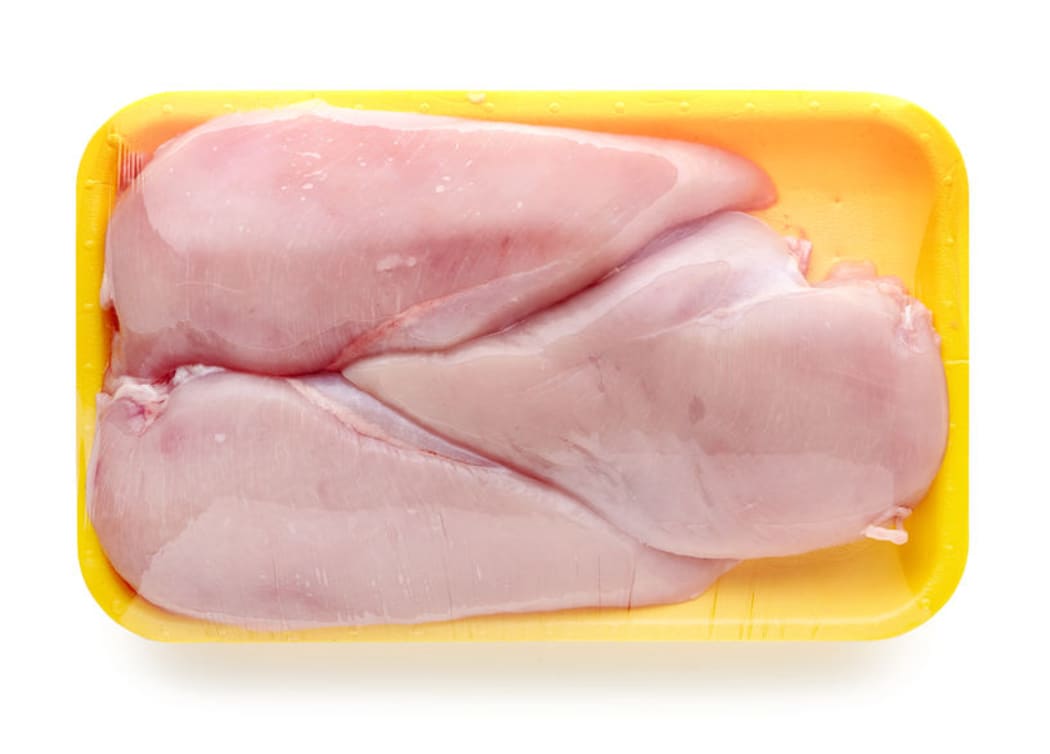Researchers have found most people don't realise the high health risk that comes with preparing raw chicken.

Campylobacter can survive if chicken is not cooked properly. Photo: 123RF
A new study from the University of Otago, Wellington, shows consumers are unaware of the level of campylobacter contamination found on fresh chicken.
Up to 90 percent of fresh chicken meat for sale is contaminated with the bacteria, which causes a severe form of gastroenteritis.
It was New Zealand's number one food safety problem, study co-author Professor Michael Baker said.
"When the chickens are being processed it's a mechanised process," he said.
"It's very efficient but it does basically spread chicken faeces over many of the carcasses.
"They're then dropped in a vat of chilled water with chlorine in it to try kill the bacteria. But that's only partially successful. So it's basically contamination from the chicken's own gut content."
About 30,000 people were made sick by contaminated chicken a year, with 600 of them going into hospital.
"Industry relies on the fact that the consumers are going to cook it (the chicken) and that they are very aware of cross-contamination," said Mr Baker.
"That clearly isn't the case."
When handling fresh chicken at home, people should wear gloves, avoid rinsing the chicken under a tap, and put the chicken in a hot oven as quickly as possible.
Any surfaces that had been in contact with the chicken should be bleached, Professor Baker said.
Ideally the Ministry of Primary Industries would mandate lower levels of contamination in fresh poultry, lowering the risk.
"This is one of the most preventable diseases in New Zealand, and amongst notifiable diseases it's actually the most common reasons for going into hospital, with 600 people a year ... so why are we not putting the effort into this that we would put into any other notifiable diseases?"
Professor Baker said there needed to be a requirement for better labelling on chicken, including safety information and the level of contamination. He pointed to reward systems used overseas for companies that have low levels of contamination in their product.
"At the moment as a consumer you can't say 'I'm going to pay a little bit more or buy a brand that has low contamination levels' because there's no indication.
"We'd be rewarding the companies that are doing better in this area."
However, Poultry Industry Association executive director Michael Brooks said a wider education programme had been in place for some time.
"I think you can get to a point of scaremongering, I think that is not productive or helpful," Mr Brooks said.
He said fresh chicken was perfectly fine to eat if it was cooked and handled properly.



